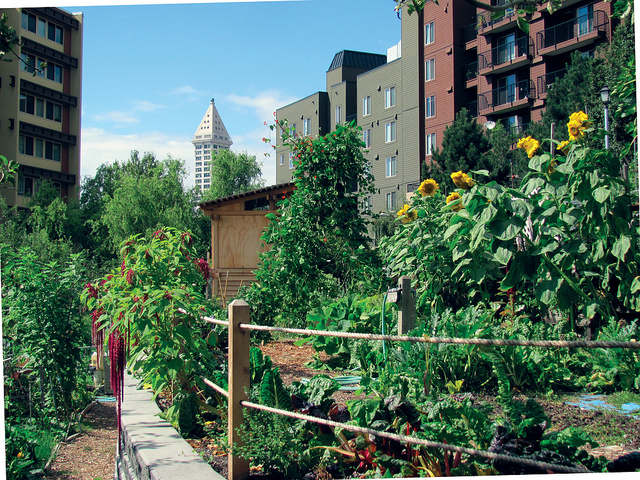City Blooming Things To Know Before You Get This
City Blooming Things To Know Before You Get This
Blog Article
Indicators on City Blooming You Should Know
Table of ContentsThe Main Principles Of City Blooming The Ultimate Guide To City Blooming10 Simple Techniques For City BloomingCity Blooming Can Be Fun For EveryoneCity Blooming for Dummies
Fascinated in growing food for sale in the City of Chicago? Below is a list of frequently asked questions relating to the regulations and regulations that farmers ought to consider when planning an urban farming job.
The zoning change does not customize any kind of other codes taking care of composting, structure licenses, buying or renting City possessed home, organization licenses or environmental contamination. There are existing codes that manage these concerns and they remain in complete result and might apply to your project. Neighborhood yards are commonly possessed or taken care of by public entities, civic organizations or community-based companies and maintained by volunteers.
Urban ranches expand food that is planned to be offered, either on a not-for-profit or for-profit basis. Due to their commercial purpose, urban ranches call for a service license.
The Greatest Guide To City Blooming
Composting is allowed yet just for plant product that is produced and used on website. The quantity of compost material can not exceed 25 cubic backyards at any offered time according to the criteria in 7-28-715 of the City's Municipal Code. Yes. Since the soil at many new yard sites requires modifying, garden compost, soil, timber chips, or various other materials can be gotten to construct or boost the expanding area - fruit and vegtables.

If a building license is called for then the hoophouse will certainly be taken into consideration an accessory building. You can find out more regarding the building license requirements by getting in touch with the Division of Buildings. The 25,000-square-foot dimension limit is planned to avoid a solitary neighborhood garden from dominating an offered block or diminishing the block's existing domestic or commercial character.
The limit does not put on gardens located in Public Open Area (POS) districts. Can there be greater than one community yard that is 25,000 square feet on a solitary block? Yes. The dimension limit puts on individual gardens, not to specific blocks. No. Fencing is not called for, nevertheless, yards that have large car park areas may be needed to mount secure fencing or other landscape design features.
The 6-Minute Rule for City Blooming
B1 & B2 districts need that all industrial use activities be carried out inside. R districts restrict industrial activity. The policies show the function and intent of the Zoning Code. Is fencing required for urban farms? Yes. Fencings might be called for, along with landscape design and screening, for certain auto parking locations and outside work or storage areas relying on place and the certain task happening.
Yes. Urban farms require structure authorizations and zoning authorizations prior to building. Other kinds of city evaluation may be needed depending upon specific structures, tasks, dimension, landscaping, licensing, public health and stormwater administration problems. A number of these requirements are determined in the project layout or allowing process, however, the candidate may be accountable to independently identify specific licenses or allows that may be needed.
Yes. The kind of permit is determined by what is happening at the website. The Department of Business Matters and Consumer Defense can help determine the details type of organization certificate that's needed. Yes. Off road auto parking is required for a lot of commercial tasks in Chicago. The required number of garage is based upon the variety of employees servicing website and not the square footage of the expanding room.
Facts About City Blooming Revealed

Yes. An urban farm can market garden compost material created on site, nevertheless, the operation should conform with the policies in 7-28-715 of the Chicago Municipal Code. Yes. Aquaponic systems are permitted indoors on city ranches in numerous zoning areas. A zoning review and building permit is called for in order to install structures or systems and a business license is required as described over.
Up to five hives or swarms of honey bees might be kept as an accessory use. Nevertheless, beekeepers must register with the Illinois Department of Agriculture. For additional information about the suggested zoning amendment you might speak to the Division of Housing and Economic Development, Bureau of Planning and Zoning at 312.744.8563.
Farming in cities and city locations A city ranch in Chicago. Urban agriculture refers to various techniques of growing. https://amber-gnu-kr6lr9.mystrikingly.com/blog/city-gardening-cultivating-green-spaces-in-urban-jungles, processing, and dispersing food in metropolitan locations. The term also applies to the area tasks of animal husbandry, aquaculture, beekeeping, and horticulture in an urban context. Urban agriculture is distinguished from peri-urban agriculture, which happens in backwoods beside suburban areas.
Some Ideas on City Blooming You Should Know
It can entail a motion of natural farmers, "foodies" and "locavores", that look for to develop social networks based on a shared values of nature and community holism. These networks can create using official institutional support, becoming incorporated into local town as a "change town" activity for lasting city development.
Some of the first proof of urban agriculture comes from Mesopotamia.
Report this page